Odee Crypto Exchange Review - Pros, Cons, and How It Stacks Up in 2025
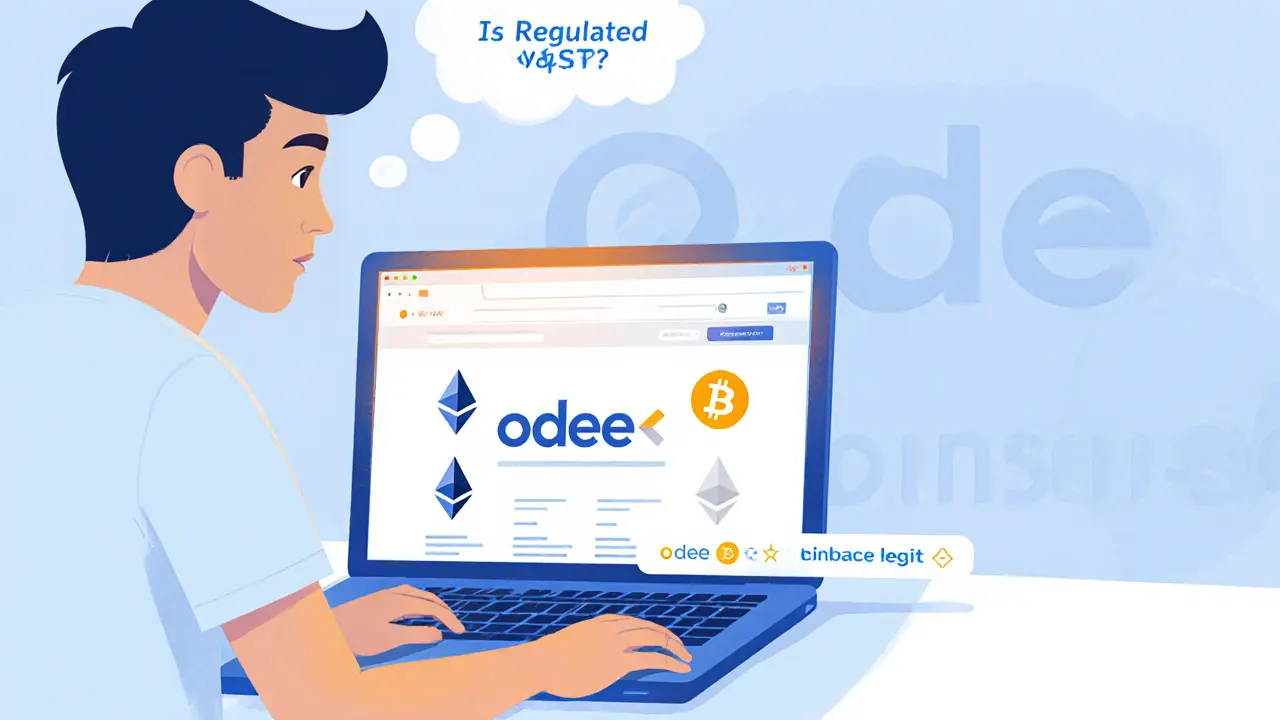
Odee Exchange Comparison Tool
This tool compares key features of Odee against industry leaders Binance and Coinbase to help assess their relative strengths and weaknesses in 2025.
Odee
Limited assets, compliance focus
Binance
Wide selection, global presence
Coinbase
User-friendly, regulated
| Feature | Odee | Binance | Coinbase |
|---|---|---|---|
| Asset Count | 7 | 600+ | 250+ |
| Regulatory Status | Unverified VASP Claim | Registered in multiple jurisdictions | Licensed in US, EU, UK |
| Trading Fees | Not Disclosed | 0.10% / 0.10% | 0.50% flat (US) |
| Security Audit | No Public Audit | Annual Third-Party Audit | SOC 2 & ISO 27001 Certifications |
| Liquidity (24-hr avg) | Low – $5–10M | >$2–3B | ~$1.5B |
| Customer Support | Email Only | Live Chat, Ticket, Phone | Live Chat, Phone, Email |
Odee Strengths
- Simple UI for beginners
- Focus on compliance (KYC, AML)
- OdeePay card integration
Odee Weaknesses
- Regulatory ambiguity
- Limited asset selection
- Opaque fee structure
- Low liquidity
Asset Variety
Regulatory Safety
Liquidity
Curious whether Odee lives up to its hype or just another footnote in the crowded crypto space? This review breaks down the platform’s core offering, regulatory claims, security posture, and how it measures against heavyweight rivals like Binance and Coinbase.
Key Takeaways
- Odee advertises itself as a regulated VASP, but independent checks show no clear licensing from a recognized authority.
- The exchange lists only seven crypto assets - a tidy selection for beginners but limiting for seasoned traders.
- Security features such as 2FA and cold storage are mentioned, yet no third‑party audit reports are publicly available.
- OdeePay card adds a payment‑card angle, but fees, geographic reach, and enrollment steps remain vague.
- Liquidity and community feedback are thin, suggesting modest trading volumes and a small user base.
What Is Odee?
Odee is marketed as a European cryptocurrency exchange that claims to be a fully regulated Virtual Asset Service Provider (VASP) licensed fintech. The platform is operated by Odee Digital Sp zoo and positions compliance - AML, KYC, and transaction monitoring - as its main selling point.
Despite the confident messaging, regulators in the EU and UK have not listed Odee in any public register, and several independent analysts flag the lack of verifiable licensing as a red flag.
Asset Portfolio - Seven Coins, No Frills
The exchange supports a narrow set of digital assets:
- Bitcoin (BTC) - the flagship store of value.
- Ethereum (ETH) - smart‑contract platform.
- Tether (USDT) - USD‑pegged stablecoin.
- USD Coin (USDC) - another regulated stablecoin.
- Binance USD (BUSD) - stablecoin issued by Binance.
- USDV - Odee’s proprietary stablecoin, touted for “ecosystem benefits” but with no published audit.
- Dai (DAI) - decentralized, algorithmic stablecoin.
For newcomers, a short list can feel less overwhelming. For traders who like to diversify across DeFi tokens, NFTs, or emerging Layer‑2 assets, the offering feels restrictive.
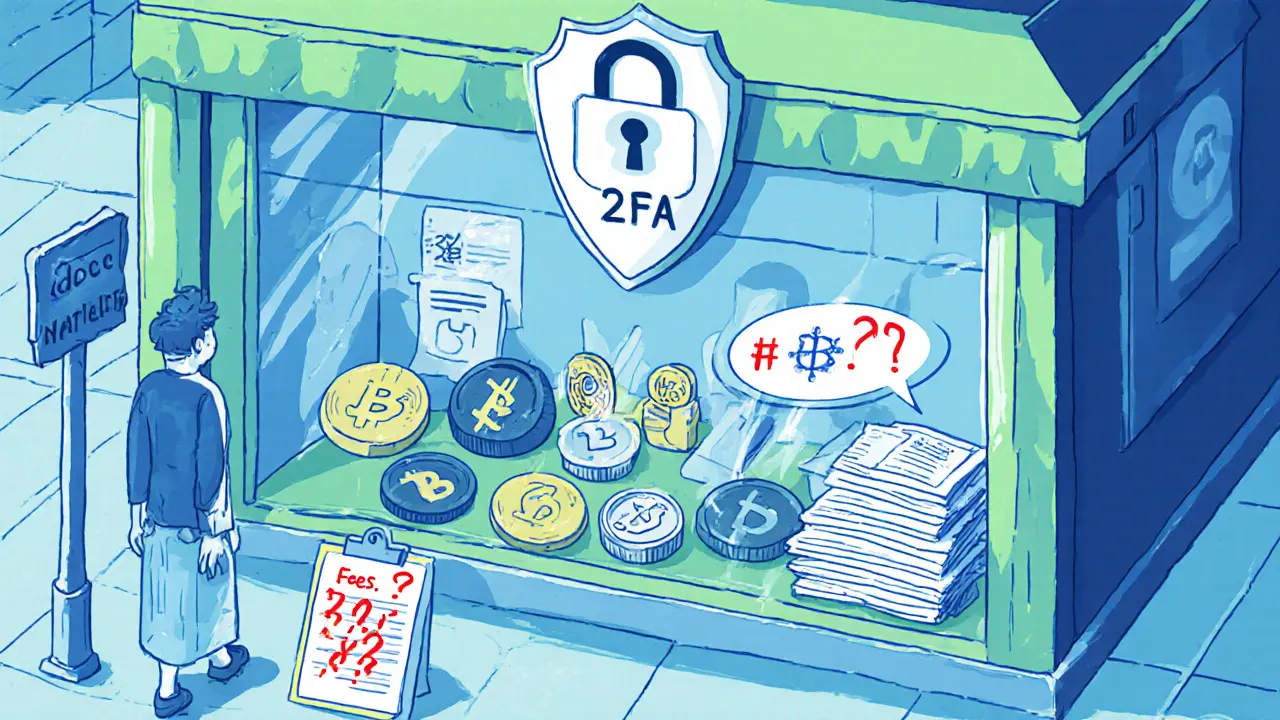
Regulatory Landscape - Claim vs. Reality
Odee’s website calls the platform a "fully regulated VASP licensed fintech in Europe." In practice, the term VASP (Virtual Asset Service Provider) requires registration with a recognized financial authority - typically a national regulator or the European Securities and Markets Authority (ESMA).
Independent checks reveal:
- No entry in the EU’s MiCA (Markets in Crypto‑Assets) registry.
- No licence number posted on the site.
- Professional commentary describing Odee as "not currently regulated by any financial authority."
Without a public licence, users lose the safety net that comes from regulated oversight - complaint handling, fund segregation requirements, and periodic audits.
Security & Compliance - Claims Without Proof
Standard security expectations for reputable exchanges include:
- Two‑factor authentication (2FA).
- Cold‑storage of the majority of user funds.
- SSL/TLS encryption for data in transit.
- Regular third‑party security audits.
- Insurance coverage for custodial assets.
Odee states it offers 2FA and “advanced verification technology” for KYC/KYT, but it does not publish audit reports, cold‑storage percentages, or insurance policies. The platform’s AML and KYC flows are described in generic terms - document upload, proof‑of‑address, and a questionnaire - with no disclosed processing times.
OdeePay Card - A Payment Twist
One differentiator is the OdeePay card, a debit‑style card that lets users spend crypto balances directly. The card features a “lock and unlock” mechanism intended to protect funds when not in use.
However, the following remain unclear:
- Card issuance fees and monthly maintenance costs.
- Supported countries - the website hints at EU focus but gives no list.
- Conversion rates when spending stablecoins versus fiat.
In practice, users may face hidden fees similar to those on other crypto‑card products.
How Odee Stacks Up Against the Big Players
| Feature | Odee | Binance | Coinbase |
|---|---|---|---|
| Asset count | 7 | 600+ | 250+ |
| Regulatory status | Unverified VASP claim | Registered in multiple jurisdictions (Cayman, Malta, etc.) | Licensed in US, EU, UK |
| Trading fees (maker/taker) | Not disclosed publicly | 0.10% / 0.10% (standard) | 0.50% flat (US) |
| Security audit | No public audit | Annual third‑party audit (KPMG) | Annual SOC 2 and ISO 27001 certifications |
| Liquidity (24‑hr avg.) | Low - estimated $5‑10M | >$2‑3B | ~$1.5B |
| Customer support channels | Email only (no live chat listed) | Live chat, ticket system, phone (VIP) | Live chat, phone, email |
In short, Odee offers a minimalist experience that may suit users who only need BTC, ETH, and a handful of stablecoins. But when you weigh fees, liquidity, and regulatory safety, the big exchanges still dominate.
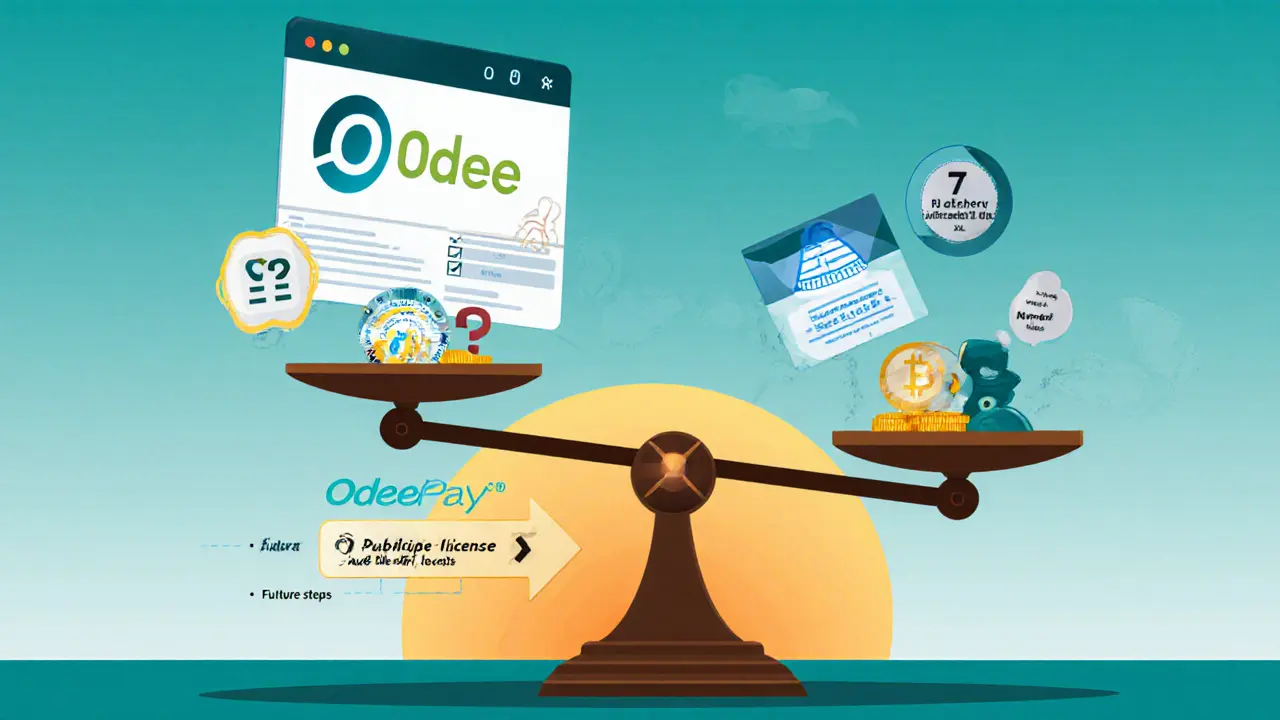
User Experience - What the Community Says
Searching Reddit’s r/cryptocurrency, Trustpilot, and BitcoinTalk yields barely any mentions of Odee. The handful of posts that do exist describe:
- Slow KYC approval times - often taking a week or more.
- Limited customer‑service responsiveness - replies taking 48‑72 hours.
- Positive remarks about the clean UI but with the caveat "only 7 coins."
Low community chatter usually translates to lower trading volumes, which in turn can cause wider spreads and slippage on larger trades.
Pros, Cons, and Who Should Consider Odee
Pros
- Simple UI - easy for crypto‑newbies.
- Focus on compliance (KYC, AML) may appeal to users who prefer stricter onboarding.
- OdeePay card adds a fiat‑spending option in a single platform.
Cons
- Regulatory ambiguity - no clear licence, raising risk.
- Very limited asset selection - no DeFi tokens, NFT marketplaces, or futures.
- Opaque fee structure and security documentation.
- Low liquidity - higher price impact on larger orders.
Best fit - Users who want to buy a few major coins, value a straightforward onboarding, and don’t need advanced trading tools. Not suitable for high‑frequency traders, institutional investors, or anyone who requires proven regulator oversight.
Future Outlook - What Needs to Change?
For Odee to survive the tightening EU crypto regulations (MiCA is now in effect), it should:
- Publish a verifiable VASP licence number from a recognized authority.
- Open up the asset roster - add popular DeFi and Layer‑2 tokens.
- Commission third‑party security audits and share the reports publicly.
- Build a community presence - engage on Reddit, Discord, and Trustpilot to gather feedback.
- Clarify OdeePay card fees and expand geographic eligibility.
Without these moves, the exchange may struggle to attract new users beyond a niche group of compliance‑curious beginners.
Frequently Asked Questions
Is Odee a regulated exchange?
Odee claims to be a regulated VASP, but no public licence number or registration with EU authorities has been found. Users should treat the claim as unverified until official documentation is provided.
What cryptocurrencies can I trade on Odee?
The platform currently supports seven assets: Bitcoin (BTC), Ethereum (ETH), Tether (USDT), USDCoin (USDC), BinanceUSD (BUSD), Odee’s own USDV stablecoin, and Dai (DAI).
How does the OdeePay card work?
The OdeePay card links to your crypto balance, allowing you to spend stablecoins or fiat‑converted funds at merchants. It includes a lock/unlock feature for extra security, but fees, country eligibility, and conversion rates are not publicly detailed.
Are my funds safe on Odee?
Odee mentions 2FA, KYC, and AML processes, but it does not publish third‑party security audits, cold‑storage percentages, or insurance coverage. Until those details are disclosed, the safety level remains uncertain.
How do Odee’s fees compare to other exchanges?
Odee does not list its trading or withdrawal fees openly, making direct comparison difficult. In contrast, Binance and Coinbase publish transparent fee schedules, giving them a clear advantage for cost‑conscious traders.
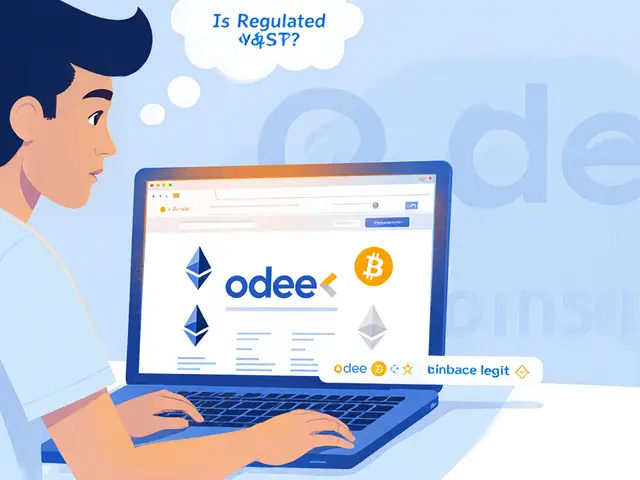
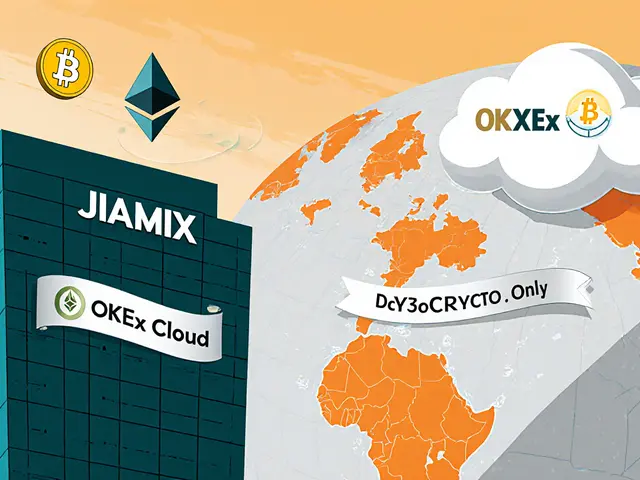
Jack Stiles
Looks like Odee’s only got a handful of coins, so newbies might feel comfy.
Ritu Srivastava
It is utterly unacceptable for a platform to brand itself as regulated while offering no verifiable licence. Users deserve clear evidence of compliance before trusting their funds. The lack of transparency undermines any claim of safety. Such opacity should raise red flags for anyone considering Odee.
Liam Wells
One must observe, with a measured eye, that Odee’s asset roster is conspicuously narrow; this scarcity inevitably limits diversification opportunities. Moreover, the purported regulatory status remains unsubstantiated, a circumstance that warrants scepticism. The absence of publicly audited security reports further compounds the risk. Consequently, prudent investors are advised to allocate capital elsewhere; the platform does not meet conventional standards of due diligence.
Caleb Shepherd
There’s a pattern of hidden motives behind exchanges that tout “compliance” without showing paperwork, and Odee fits that mold. The silence on licensing suggests they might be operating in a legal gray zone, perhaps to evade stricter oversight. Users often overlook these red flags, assuming the badge means safety, but the reality is more sinister. It’s wise to stay vigilant and demand proof before committing funds.
Ken Pritchard
For newcomers, a simple interface can be a real advantage, and Odee certainly delivers on that front. However, the limited selection means you’ll miss out on many emerging projects that have strong growth potential. Think of the platform as a basic entry point rather than a full‑featured trading hub. If you plan to stay with just the major coins, it might work, but diversification will require another exchange.
Don Price
When evaluating Odee, one must first acknowledge the glaring disparity between its marketing promises and the concrete data presented. The platform advertises a regulated VASP status, yet no official registration number can be located in any EU or UK financial authority database, which is a substantial omission. Furthermore, the asset lineup is limited to just seven tokens, a selection that pales in comparison to the hundreds offered by industry leaders such as Binance and Coinbase. This scarcity not only restricts trading strategies but also curtails exposure to innovative DeFi projects that could diversify a portfolio. On the security front, the exchange mentions two‑factor authentication and cold storage, but without a publicly available third‑party audit, these claims remain unverified. Liquidity figures, estimated at roughly $5‑10 million, indicate a thin order book that could result in significant slippage for larger trades, a factor that active traders cannot ignore. The fee structure’s opacity adds another layer of uncertainty; without transparent maker‑taker rates, users cannot accurately calculate cost of trading. Customer support is limited to email, a channel that historically yields delayed responses, especially when juxtaposed with the live‑chat and phone options of competitors. While the OdeePay card offers a novel way to spend crypto, the absence of disclosed fees and geographic availability makes it a risky proposition. Regulatory ambiguity, limited assets, opaque fees, low liquidity, and subpar support collectively paint a picture of an exchange that may suit only the most passive, risk‑averse users. For anyone seeking robust trading tools, deep markets, and regulatory certainty, the platform falls short of industry standards. In summary, Odee presents a minimalist package that could serve as a stepping stone for absolute beginners, but it lacks the depth required for serious or institutional traders.
Dawn van der Helm
Hey folks 😊! Odee’s clean UI is definitely a plus for folks just getting started. The OdeePay card sounds cool, but the hidden fees could bite later 💸. If you value transparency, keep an eye on the licensing claims. Overall, a modest option for beginners, but not the best for heavy traders 🚀.
Monafo Janssen
From a cultural standpoint, it’s interesting to see a European‑focused exchange trying to carve out a niche with compliance as its flagship. The simplicity of the platform could appeal to users from regions where crypto adoption is still nascent. Yet, the limited token list may feel restrictive to those accustomed to broader markets. If Odee expands its asset roster, it could bridge the gap between regulation and diversity, fostering wider acceptance.
Michael Phillips
Trading is not just about numbers; it reflects our relationship with risk and reward. Odee’s minimalist approach forces us to contemplate the essence of investing-do we chase the newest token or stick to proven assets? In a world saturated with options, the platform’s restraint can be a meditative exercise, reminding us that simplicity has its own virtue.
Jason Duke
Odee’s UI is slick, and that’s a win for newcomers! Still, the hidden fees are a buzzkill-transparent pricing would make it shine brighter. If the team releases an audit report, that could boost trust big time. Keep an eye on updates; the platform has potential if they address the gaps.
Bryan Alexander
In the grand theatre of crypto exchanges, Odee plays the understudy-quiet, uncertain, yet yearning for the spotlight. Its modest asset list feels like a whisper against the roaring chorus of giants. While the UI offers a gentle embrace, the shadows of regulatory doubt linger ominously. Could Odee rise, or will it forever linger in the wings?
Patrick Gullion
Honestly, the hype around Odee feels a bit overblown; a handful of coins and vague compliance don’t justify the fanfare. Many users chase the novelty, but the core fundamentals are missing. If you’re after solid footing, look elsewhere.
Darren Belisle
While I respect the enthusiasm for a new entrant-indeed, fresh competition can invigorate the market-one must also acknowledge the practical constraints that Odee currently exhibits; limited liquidity, opaque fees, and regulatory ambiguity are non‑trivial hurdles that cannot be ignored; prospective users should weigh these factors carefully before committing funds.
Mark Bosky
From a compliance perspective, the absence of a verifiable VASP licence is a critical shortcoming; without documented regulatory approval, the exchange cannot guarantee the safeguards typically associated with licensed entities. Additionally, the lack of a public security audit leaves the platform’s risk profile undefined. I would advise prospective users to await official documentation before allocating substantial capital.
Brian Lisk
Considering the points raised regarding regulatory uncertainty, it becomes evident that a rigorous approach to due diligence is non‑negotiable; investors should request explicit licensing information, scrutinize third‑party audit reports, and evaluate the platform’s token coverage relative to market demands. Moreover, the fee opacity can materially affect long‑term profitability, especially for active traders; transparent fee tiers are essential for accurate cost modeling. While the user interface may be appealing to beginners, the underlying infrastructural deficiencies-namely low liquidity, limited asset variety, and constrained customer support channels-pose significant operational risks. In sum, a balanced assessment must weigh the superficial ease of use against the deeper structural gaps that could impede sustainable growth and user protection.